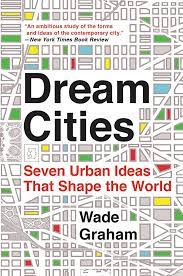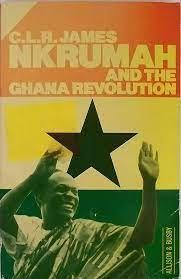Metropolitan Marketplaces (or: The City of New York vs. New York City)
Here’s a bit from Marketplaces Find A Way, a fairly delightful article by M. Nolan Gray in the July 2023 (Adam Smith 300) issue of Reason. The photo discussed in the block quote is up at the top of the article on the web, and laid out on the page in the print edition; so I’ve embedded that here directly by the part of the text that’s talking about it.
Back in the physical world, this indelible urge to truck, barter, and exchange forms the basis of cities. As the urban planner Alain Bertaud has argued, people principally gather to exchange goods, labor, and ideas. This is why cities follow a near-universal pattern of densities peaking around a central business district and declining outward. It’s also why dedicated marketplaces are a near-universal urban design feature, from New York City’s Times Square to Mexico City’s Zócalo to Istanbul’s Grand Bazaar.
It’s ironic, then, that contemporary Anglo-American urban planning is almost completely defined by a phobia of markets.
The streets and sidewalks of American cities were once sites of spontaneous, unplanned marketplaces. As captured by the iconic 1900 photo of New York City’s Mulberry Street in Little Italy, peddlers with pushcarts once set up shop along busy streets selling everything from peanuts to watches—an accessible kind of entrepreneurship that naturally appealed to immigrants. Any public space could turn into a marketplace, if the conditions were right.
![[Here's the photo of a crowded urban streetscape in 1900.]](https://d2eehagpk5cl65.cloudfront.net/img/q60/uploads/2023/07/MarketplacesFindaWay1.jpg)
This kind of informal market activity was stamped out by corralling sellers into discrete districts, mandating expensive licenses, or banning vendors altogether. Similar fights are underway in cities in regions across the developing world, where a quixotic quest for visual order and a reorientation of the urban public realm around the car has led to similar anti-vendor efforts in Latin America and Southeast Asia.
Likewise, markets once blended naturally into almost every neighborhood, even residential areas. As a trip to New York City’s Tenement Museum reveals, the strict distinction between home and work is an entirely modern invention; historically, front parlors doubled as offices, workshops, restaurants. The same is true of neighborhoods: Even the most humdrum residential neighborhood was once served by corner groceries, barbershops, and bars.
Zoning’s role in perpetuating the housing affordability crisis is well known. But equally pernicious has been the way zoning has excised markets from daily life. This is by design: Early 20th century Anglo-American elites saw the mere presence of market activity as corrupting. Such prejudices turned into zoning codes that strictly segregated land uses, producing a monoculture landscape of strip malls and subdivisions.
In pre-zoning neighborhoods in cities like Washington, D.C., one can still find the remnants of a lost world of neighborhood commerce, if you know where to look.
Markets find a way….
— M. Nolan Gray, Butchers, Brewers, and Bakers Still Thrive in Urban Marketplaces
Reason (July 2023)
Shared Article from Reason.com
Butchers, brewers, and bakers still thrive in urban marketplaces
Adam Smith recognized that man has a natural "propensity to truck, barter, and exchange."
M. Nolan Gray @ reason.com
For some past pull-quotes and extended writing on similar themes around here on the blog, also check out:
Shared Article from Rad Geek People's Daily
“Is shopping a recipe for the city?” (Wade Graham, DREAM CIT…
From a generally very interesting chapter on Idea 6, Malls, in Wade Graham’s Dream Cities: Seven Urban Ideas That Shape the World (a book on archite…
radgeek.com
Shared Article from Rad Geek People's Daily
Market-Women and the Revolutionary Market-Place (Gold Coast/Ghan…
From C.L.R. James, Nkrumah and the Ghana Revolution (1977/1982): Chapter 3. The People in 1947. . . . There was yet another social feature of Gold C…
radgeek.com
Shared Article from Rad Geek People's Daily
If you enjoyed Pigs as a Paradigm, here is some more from the same place, which may be something by way of a moral. This is in Aristide’s article Gl…
radgeek.com
Shared Article from Rad Geek People's Daily
Markets used to be celebrations. . . .
Like I mentioned yesterday, I’m trying to get some of my accumulated notes, scraps and fragments compiled into the blog. Here’s a beginning of som…
radgeek.com
Shared Article from Rad Geek People's Daily
Mutual Markets vs. Corporate Capitalism: A Formulation
So, going through the final rounds of work on Markets Not Capitalism with Gary and the rest of the Collective has really been reminding me that I’ve…
radgeek.com
Shared Article from Rad Geek People's Daily
Bits & Pieces on Free Market Anti-Capitalism: Is this all just a…
On Markets, Marketplaces, Capitalism, and the Strip Mall vs. the Bazaar
radgeek.com


Reply to Metropolitan Marketplaces (or: The City of New York vs. New York City) Follow replies to this article · TrackBack URI
Follow replies to this article · TrackBack URI